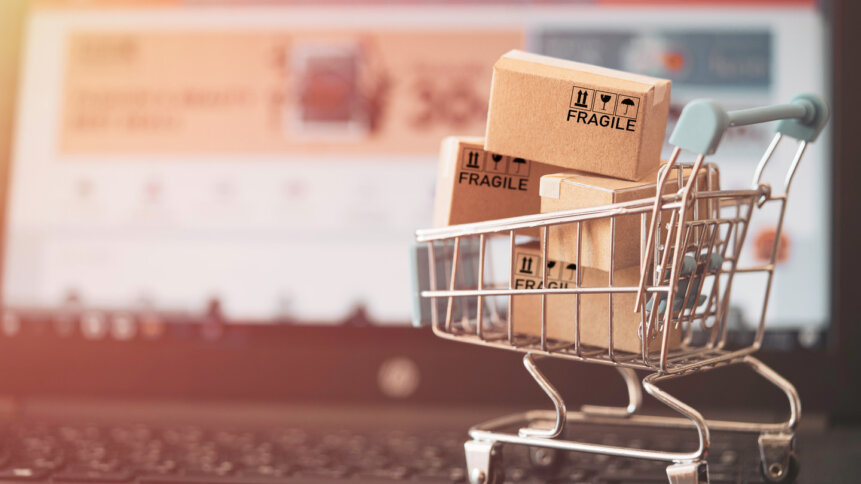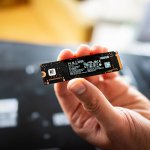Choosing desktops and laptops for your small business

|
Getting your Trinity Audio player ready...
|
Choosing desktops and laptops for your small business is a process that requires a degree of self-knowledge of your business. How many staff do you have? How many work in a central office, and how many work remotely? How cloud-centered is your business, and how much hardcore processing and storage do you need on particular staff’s machines? Do you engage in data-heavy programming or computer-aided design work? What’s your per-unit budget – and does it change from staffmember to staffmember, depending on the nature of their particular work? Are you buying in bulk to get the most power for your processing buck? Have you factored in device insurance, cybersecurity training for remote staff, hardware lifecycles and your green footprint? What kind of peripherals do you need for particular work roles?
All these and more are questions you should be able to answer before choosing desktops and laptops for your small business.
Desktops v laptops.
Before you invest in desktops – which are traditionally larger, with more on board storage and processing power – it’s worth deciding on how cloud-native your business needs to be. That’s not as easy a decision as it sounds, because the more cloud-native your business is, the less on board storage you’ll need – but the more cloud storage you’ll pay for.
To some extent, you can think of that as being a choice between six of one and half a dozen of the other. But the more cloud-native your business is, the easier it will be to safely run a hybrid working environment, and the more future-proof your business will be, as it will include fewer inaccessible data silos than businesses with crucial data locked away on individual desktop hard drives.
So there’s a strong argument that if you’re embarking on a hardware buying spree for your small business, either to set the business up for the first time or to upgrade its overall hardware profile, you’re better advised to spend on cloud storage than you are on mega-powered, heavy storage, behemoth desktop machines.
In fact, to take that logic further, unless you have particular service or display needs that demand the bulk and power of a desktop, the more you spend on your cloud services, the less you need desktop computers… at all, even for knowledge workers who are tethered to a central office.
Far be it for us to toll the death-knell of the desktop, but for small businesses, the use cases for desktop machines are narrowing year on year, as SSD storage in laptops, separate large HD screens, and cloud-native operations that allow for multi-user working from both on-site and remote locations advance.
The technological factors.
If you’re choosing desktops and laptops for your small business, there will be a handful of technological factors to look at and match with the work needs and profiles of your staff.
CPU.
The Central Processing Unit will determine the speed of processing your machine will be able to deliver. For modern small businesses, the Intel i3 or AMD Ryzen 3000 class is potentially in danger of underpowering your business, especially given the advancement of business programs in recent years. Either an i5/5000 series or an i7/7000 series CPU should comfortably handle most modern business programs. Don’t be precious, though, and keep the higher-powered processors necessarily for managers. If your bookkeepers are running complex accounting packages, they probably deserve an i7/7000 series processor more than staff running mostly Microsoft or Microsoft-equivalent programs.
If you have staff doing a lot of graphic-heavy or data-churning work, be a good business owner or manager and spring for an i9/9000 series at least. It will cost you more, but it will pay for itself in faster, slicker results, and happier staff.
RAM.
You’ll need machines with at least 16GB of RAM to really keep up with modern business software. As with the CPU, assess the needs of individual job roles – 32GB will be sufficient for many roles in a small business, but if you’re a small design firm or data science hub, bite the bullet of your business profile and go up to the more pricey 64GB for all staff engaged in those roles.
Storage.
Storage is where the cloud-native nature – or not – of your business comes into play. These days, there’s a stratification effect in place. 512GB of storage, if it’s SSD storage, is thought to be adequate in many small businesses, especially if it’s backed up by a cloud storage infrastructure, because then you’re using on board storage more to host programs than for file storage, unlike the old days of, say, 5 years ago. 1TB laptops and desktops are often towards the more expensive end of what’s available, but they’re the threshold marker. If you want to go up to 2TB of internal storage, you’re looking at almost double the cost per unit, which is something to factor into your calculations. How badly do you really need that extra terabyte on internal storage?
Again, if you make your business cloud-native, you can get away with not paying the cost of higher-level on board storage. But if, for instance, you’re running a handful of desktop machines in the office and don’t want to trust to peripherals like external storage drives for fear of loss, damage, data-theft and the like, the option is there to go heavy on storage – but be sure it makes economic and security sense to do so before you click a “buy” button.
Networking.
As the need for heavy on board storage has declined in recent years, the need for strong and rapid networking has significantly increased, whether you’re looking at desktops or laptops. Especially if you have a mostly remote workforce, don’t scrimp on your networking capability, because it’s what gives them access to cloud-based company systems, and makes hybrid working a realistic option.
You’re looking for machines with WiFi 6/6e in 2023 – a few years ago, you could have got by with less, but in the post-pandemic hybrid work model, accept no substitutes in either your desktops or laptops. Fortunately, WiFi 6 is becoming the supplied-as-standard norm these days, and looks to be future-proof at least for the short-to-mid-term.
Hardware-based security.
We rightly hear a lot about cybersecurity, but firmware security is important, too. There is no sense in putting all your eggs in one basket if the basket itself is weak and leaky. Look for machines with Unified Extensible Firmware Interface, TPM 2.0 or higher (depending on the sensitivity of the data on your machines), and again, depending on exactly how secure you want your data to be and how much you’re prepared to pay to ensure that security, ask your hardware supplier about chip-based drive encryption.
Display.
As we mentioned, display characteristics these days can be a trade-off. Do your staff need touchscreen laptops or desktops? Do they need HD screens for design or data work? Or can most of them work perfectly well without the need to invest in HD or OLED screens?
Perhaps as relevant is screen size – can staff work on smaller laptops with cloud connectivity if you provide larger separate screens as an eyesight-saving option? Do your staff work on data-intensive projects that could benefit from triptych-screens? Again, by knowing the nature of your small business, and the needs of the staff roles within it before you begin choosing desktops and laptops, you’ll save yourself both money and trouble at the buying stage.
Peripherals and other elements.
Peripherals can make a world of difference to the successful running of your small business – are you investing in ergonomics? And if so, are you providing them just within the office environment or in workers’ homes, too? Will you need to invest in additional software like screen readers or vertical mice so that particular staff will be able to complete their work effectively? If your choice of main machine goes low on internal storage to keep costs down, will you need external storage drives or even small non-cloud servers as potential backups to keep your business running in the event of hardware failure? Are you pre-installing – or getting your supplier to pre-install – reliable VPN software to the laptops of at least all your remote workers, so they don’t rely on public WiFi when working outside the home or office, and put your systems at risk?
All of these are cost elements that will impact your decisions when choosing desktops and laptops for your small business. The crucial thing when making these choices is to know your business and its technological needs, understand the degree to which you’re going to invest in non-corporeal storage and processing through the cloud, and be across the requirements of all the staff roles within your company, so you know who will need what specific desktop or laptop functionality before you begin your acquisition phase.
Know all that, and know what your options are in terms of the available – and desirable – technology, and choosing desktops and laptops for your small business should be a piece of cake.










